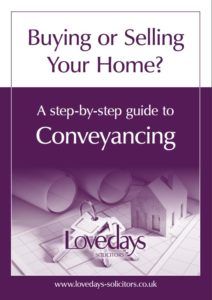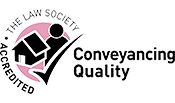- Home
- Personal Services
- Advice for Employees
- Conveyancing
- Dispute Resolution
- Boundary Disputes
- Dealing with Rent Arrears
- Japanese Knotweed Claims
- Landlord and Tenant Disputes
- Landlord Harassment & Illegal Eviction
- Negligence Claims Against Builders & Developers
- New Build Property Disputes
- Noisy Neighbour Disputes
- Personal Debt Collection
- Property Misrepresentations Claims
- Rights of Way Disputes
- Section 21 No Fault Evictions
- TOLOTA Claims
- Tree & Hedge Neighbour Disputes
- Divorce and Separation
- Family Law
- Lasting Power of Attorney
- Licensing
- Probate Law
- Trusts
- Wills
- Business Services
- Reviews
- Make An Enquiry
- Cost and Service Information
- About Us
- Contact Us
IHT205 Application Advice
Dealing with the death of a loved one or family member can be a complicated process with a lot of paperwork involved. It is very important to make sure that everything is completed properly and one of the forms you will need to deal with is IHT205. This is a form which needs to be sent to the Probate Registry when there is no Inheritance Tax to pay on the estate of someone who has passed away.
This can be a very important piece of paperwork and so it needs to be completed accurately and returned on time in order to avoid any penalties being applied to the estate. At Lovedays Solicitors we have significant experience in dealing with all matters of Inheritance Tax and can assist with any IHT205 applications to make the matter much easier to deal with.
Overview of IHT205
When someone dies, it is left to the executors of the will to organise how the estate is dealt with. If an estate is worth less than £325,000, or below £1,000,000 if left to a spouse or civil partner, then there is no Inheritance Tax to pay. In order to deal with the assets and finances of an estate when someone has died, you will need a Grant of Probate, but before this can be issued you must have dealt with any Inheritance Tax issues.
If there is no Inheritance Tax payable on the estate, then you need to inform the Probate Registry through the IHT205 form. When you have done this, you are then required to swear on an oath that promises everything on the form is correct and truthful.
This needs to be done at the local Probate Registry, or with a solicitor in the office of a commissioner for oaths. It is therefore very important that everything in the form is completely accurate and so enlisting the help of a specialist probate solicitor can ensure that you will not encounter any problems further down the line.
{quote}
Key Elements of IHT205
After 31st December 2022, you will need to print and post the form. When completing the form, it is essential that you ensure that you are accurate and thorough throughout.
Before starting, you will need to confirm that the estate qualifies as an ‘excepted estate’, and you will need to gather together any documents related to the deceased's assets and liabilities. This should include bank statements, property deeds, mortgage details and any information on debts and loans that might be outstanding.
This will help you to put together an accurate valuation of all assets at the time of death. In order to do this, he might require some professional appraisals for property and high value items to make sure that your valuations are accurate. You will then be able to complete the Asset Section of the form. This requires you to fill in the value of each asset, remembering to include joint assets and gifts given by the deceased within the last seven years of their life.
The next step requires you to deduct any outstanding debts from the total asset value. This can include mortgages, loans, credit card debts, and funeral expenses. It is important to make sure this is correct as it could affect whether the estate crosses into the Inheritance Tax threshold.
When all of this is complete, you must calculate the net estate value by subtracting the total debts from the total assets. You will then need to complete the Exemption Sections to detail whether the estate is exempt due to any spousal or charity requests. If so, you should provide details of the beneficiaries and the value of the assets that have been passed to them. You will then need to review whether there are any Inheritance Tax reliefs or deductions relating to business or agricultural reliefs.
Then fill in details about the executor and the deceased, including their name, date of birth, date of death, and address. It is important that you review the form thoroughly to ensure all figures are correct and every section has been completed. The form must then be signed and dated by the executor or administrator and submitted to the appropriate Probate Registry or HMRC office.
Steps to Complete IHT205
Gathering Required Information
Before you start completing the IHT205 form, it is important that you have all necessary documents and information to hand. You will need to establish the exact value of the estate that you are dealing with and so it is important to get professional valuations of any high value assets such as property, investments, vehicles or jewellery.
You will also need bank statements that detail how much money is held in savings accounts. In addition to this, you need to look at the debts and liabilities of the deceased and gather together details of any mortgages or debts that might be outstanding.
You will need to establish a total value of what is still owed and deduct this from the full valuation of the estate in order to understand what the estate is then worth. This will allow you to calculate whether it falls into the Inheritance Tax threshold or not.
Filling Out the Form
The IHT205 form is the simpler form for excepted estates. The first section concentrates on the details of the person who has died, including their name and address, date of birth and date of death. This is followed by a section which covers the estate itself. You will need to give details of any gifts that were made by the deceased and any information that may mean you need to complete form IHT 400 instead.
The final section looks at the deceased's assets at death and is broken into a number of subsections, including details of gifts made, jointly held assets, assets held in trusts for the deceased's benefit, other assets, debts of the estate, and assets passing on death which qualify for exemption as inter spouse gifts or charitable gifts.
It is important that you double check all IHT205 entries before you submit them. It is easy to make mistakes on the valuation of any assets and calculating whether Inheritance Tax is due or not. If the information you give is wrong then you may be liable to financial penalties, so it is important that you get the right support when it comes to filling in the form.
Submitting the Form
Once you have completed and double checked the IHT 205 form, you will then need to sign and date a declaration confirming that the estate qualifies as an excepted estate. The form then needs to be lodged with the relevant Probate Registry, and not HMRC, within 12 months from the end of the month in which the death occurs.
Once the Grant of Probate has been issued then the Probate Registry will send the completed IHT205 Form to HMRC. If the deceased lived in England or Wales then the IHT205 form needs to be sent to HMCTS Probate, PO Box 12625, Harlow, CM20 9QE. If the deceased lived in Northern Ireland, the form should be sent to the Probate Office, Royal Courts of Justice, Chichester Street, Belfast, BT1 3JF.
{quote}
After Submission
Follow-Up Actions
When you submit the form, it is recommended that you keep a copy for your own records. This will come in handy if the value of the estate changes after the Grant of Probate is issued and tax becomes payable. In this instance you may be asked to provide a copy of the form, or you may need details for the Department of Work and Pensions, and so it is important that you have your own copy. You will not be asked to send any supporting documentation with your form, but you should keep these in a safe place in case they are asked for at a later date.
If you have filled in the form correctly, then you should not hear from HMRC. They have 35 calendar days after the issue of the Grant to write to you about the information you have given in the form, and this could mean that some Inheritance Tax is due.
If you do not hear anything at that time, then HMRC will not need to see the papers and records that you have, and you will not need to pay any tax. It is important to remember that this does not apply if you have omitted anything about the estate on the form.
Dealing with Complications
One of the most common issues that may arise after you have submitted your IHT205 form is that you find the value of the estate has changed. This might be because you have uncovered some more assets that you didn't know about or that you find out the value of an asset has changed. You should therefore amend your working copy of the form, and if the value of box K on the form is more than the Inheritance Tax nil rate band then you will need to inform HMRC about the changes and pay any tax that is due.
It is also possible that the exemptions may change if those who inherit the estate change after the date of death. The beneficiaries of an estate can change who inherits an estate by executing a deed of variation. It may also be the case that when the value of the estate changes pushing it above the Inheritance Tax nil rate band, but you may still be able to claim a transfer of unused nil rate band, meaning there is still no tax to pay. In this instance, you should send a copy of the IHT205 and a completed C4 ‘corrective amount’ form as well as a completed IHT217 ‘claim to transfer unused nil rate Band-Aid for accepted estates’ to HMRC.
How Lovedays Solicitors Can Help
The IHT205 form is an essential piece of paperwork when dealing with the death of someone, but it can also be part of a very complicated business. You not only need to confirm what is part of the estate of the deceased, but also the correct values of it and whether any exemptions apply in order to determine whether Inheritance Tax may be due.
The experts at Loveday Solicitors are here to help you wade through this process and can organise professional valuations of any high value assets and also assess debts and liabilities to make sure that you have an accurate representation of the value of the estate.
Whilst there are some guidance notes provided by the government on how to complete the IHT205 form, it can still be a very difficult and time consuming process for most people. As the professional team at Loveday Solicitors are familiar with this form and know exactly what is entailed, we can help to complete this on your behalf.
This ensures that all the information is accurate and correct and that all areas of the form have been thoroughly completed. This can help to relieve a lot of the stress and difficulty for you and ensure that all applications are made in a timely manner, whilst being completely accurate to help avoid any unnecessary penalties or delays.
Conclusion
The IHT205 form is very important when it comes to calculating whether any Inheritance Tax is due to be paid on an estate. A failure to complete the form correctly or on time can lead to penalties or could mean that the state is subject to tax when it should not be.
It is therefore incredibly important to make sure that it is completed correctly and thoroughly, and so it is important to have expert guidance on hand while you deal with this.
At Lovedays Solicitors, we can provide a compassionate and professional team who will help you with every process and ensure that there are no issues in completing and returning your form to help minimise the stress of dealing with it yourself. Please get in touch with us today to find out more about the expert help that we can offer.
{quote}
Frequently Asked Questions
Spouses and civil partners can transfer their unused nil rate band. This means that any part of the nil rate band which was not used when the first partner died can be transferred to the surviving spouse for use by their estate on their death.
You do not need to send any forms when you submit form IHT205. However, it is recommended that you keep a copy of the form and that you also make copies of any probate forms, the will and the deceased's death certificate so that you have them for your own records.
If you have made a mistake, then you should submit the revised forms as soon as possible. You should also include a covering letter to explain your mistake. It is therefore advisable to get a solicitor to check your IHT205 form before you submit it to make sure that there are no errors within it.
Get Support Today
Navigating the complexities of the IHT205 application can be daunting, especially when dealing with the emotional toll of a loved one’s passing. At Lovedays Solicitors, our experienced team is here to alleviate that burden. We provide expert guidance to ensure your IHT205 form is completed accurately and efficiently, helping you avoid costly mistakes and unnecessary delays.
Trust our compassionate professionals to handle the intricate details, so you can focus on what truly matters. Let us take the stress out of the process—contact Lovedays Solicitors today for reliable IHT205 application advice.

Free Guide
If you don’t know your leasehold from your freehold, then get our Free Conveyancing Guide. It contains details about the steps you will need to take with any property transactions. The Guide giving you detailed guidance on what your lawyer will be doing for you and what to look out for.


Lovedays Solicitors, Potter and Co Solicitors and Andrew Macbeth Cash and Co Solicitors are the trading names of Derbyshire Legal Services Limited which is a company registered in England and Wales under company number 08838592. Registered office Sherwood House, 1 Snitterton Road, Matlock, Derbyshire, DE4 3LZ.
Authorised and Regulated by the Solicitors Regulation Authority under SRA ID number 637916.
-
01629 56660
-
This email address is being protected from spambots. You need JavaScript enabled to view it. -
Sherwood House
1 Snitterton Road
Matlock
Derbyshire
DE4 3LZ
© Copyright 2019 Derbyshire Legal Services Limited | Website by WebWorks